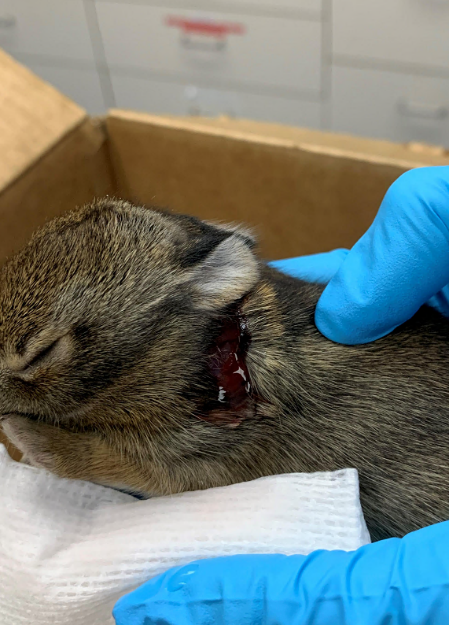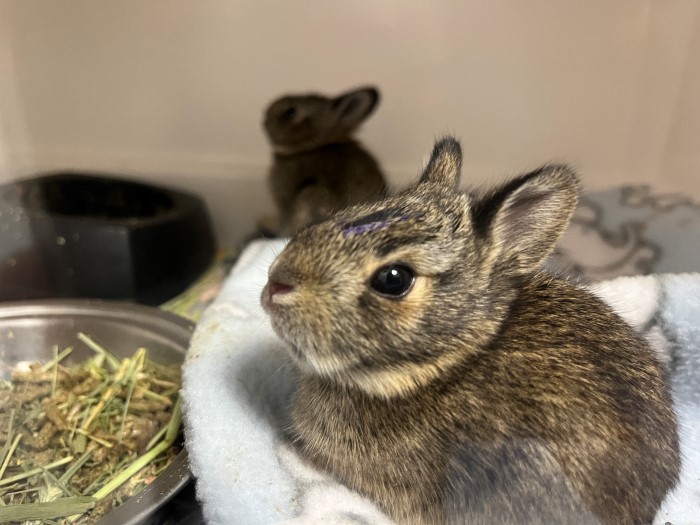Recently, a juvenile eastern cottontail was brought in to the Wildlife Medical Clinic after being picked up by a community member’s dog. While they’re man’s best friend, excited dogs can end up injuring wild animals. Unfortunately for this bunny, he was left with a laceration over his right shoulder and was unable to return to his nest. This patient needed extra care and attention because eastern cottontails have delicate digestive systems and easily stressed. ![[injured bunny]](https://vetmed.illinois.edu/wp-content/uploads/2021/06/ht-10-20-2-300x300.jpg) Rabbits rely heavily on their “hind-gut” or cecum to ferment all the greens they eat. They have precise proportions of different microorganisms in their digestive tract; if they have an imbalance of microorganisms, or dysbiosis, they could become gravely ill. Stress and feeling sick can cause rabbits to stop eating and create an imbalance in microorganisms! Unfortunately, we see only stressed and sick rabbits in the clinic. Wild rabbits are easy to scare and generally do not do well in captivity. As such, we have to be quick and gentle while handling cottontail patients. Their environment must be quiet and clean, and they need the freshest leafy greens. We also supplement special veterinary diets for rabbits in the clinic to keep them eating healthy foods. In addition to ensuring rabbits are eating, we also have to consider the rabbit’s digestive system when prescribing medications. The sensitive microorganisms in a rabbit’s digestive tract can be killed by certain types of antibiotics and the rabbit’s digestion could be slowed by common pain medications.
Rabbits rely heavily on their “hind-gut” or cecum to ferment all the greens they eat. They have precise proportions of different microorganisms in their digestive tract; if they have an imbalance of microorganisms, or dysbiosis, they could become gravely ill. Stress and feeling sick can cause rabbits to stop eating and create an imbalance in microorganisms! Unfortunately, we see only stressed and sick rabbits in the clinic. Wild rabbits are easy to scare and generally do not do well in captivity. As such, we have to be quick and gentle while handling cottontail patients. Their environment must be quiet and clean, and they need the freshest leafy greens. We also supplement special veterinary diets for rabbits in the clinic to keep them eating healthy foods. In addition to ensuring rabbits are eating, we also have to consider the rabbit’s digestive system when prescribing medications. The sensitive microorganisms in a rabbit’s digestive tract can be killed by certain types of antibiotics and the rabbit’s digestion could be slowed by common pain medications.
We very carefully examined this eastern cottontail and noticed that his laceration extended completely through his skin. Luckily, rabbits have extra loose skin, so the muscles and bones near the laceration were uninjured. He received a rabbit-friendly antibiotic, pain medications, and an anti-inflammatory drug to keep him comfortable and support his immune system. Because he was still young, he needed to be fed baby rabbit formula in addition to the healthy greens we offered him. Once the wound was clean, the edges of skin were sutured together. This helped speed up his healing and keep dirt and debris out of the wound. After two weeks, this patient had grown to an appropriate size to be on his own! With his wound healed and a clean bill of health, he was ready to be released!




